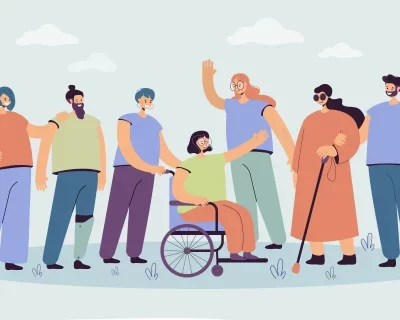The customer at the centre of marketing strategy

The customer at the centre of marketing strategy
The consumer is increasingly demanding and does not hesitate to compare products and prices before buying. According to a recent Wearesocial study, 82% of French Internet users did online searches before their purchase. With the development of the Internet and connected objects, the relationship between the brand and the customer has evolved. The brand must therefore implement a customer strategy to diversify its points of contact with its customers and retain them.
But then how to better acquire and retain its customers ?
Adopt a “cross-channel” customer strategy
In recent years, customers have multiplied the channels of contact with the company in their purchase journey. To acquire customers, brands need to rethink their communication by going where the consumer is. To do this, it is no longer enough to settle for a “multi-channel” strategy but rather “cross-channel” or even “omni-channel” in order to create a continuous interaction with the customer.
The multi-channel is the fact of offering several sales channels, without the possibility for the customer to change it during the purchase. Conversely, the omni-channel strategy makes it possible to establish a close relationship with customers by combining distribution channels to simplify the user experience. This is the case with connected stores. The customer can make a purchase in store by relying on information present on the internet.
To be truly effective and simplify the customer experience, this strategy must be based on the complementarity between physical and online store. The cross-channel strategy is a good compromise between multi-channel and omni-channel by streamlining the consumer journey. For example, click-and-connect is part of the trend of the web-to-store.
It is therefore necessary for brands, to be able to approach the consumer at the right time by giving him personalized information. Contact channels must be complementary. Instant support via Click to chat will be effective and personalized if coupled with a behavioral targeting tool. Thus, the targeting tool identifies Internet users who need help. He invites them to the discussion and follows their navigation to allow the advisor to give the appropriate and personalized information. Likewise, the Click-to-call must be offered in addition to traditional contact tools such as telephone or email. By thinking of the exchange as a whole, the brand will only be able to increase its return on investment.
Establish a privileged relationship with the consumer
In a context where the consumer is unfaithful and systematically compares everything, the challenge for brands is to establish a close relationship with their customers. In the era of individuality, consumers want to stand out and are looking for originality and tailor-made products. Businesses need to make consumers feel that they are unique.
For this, marketers are increasingly turning to individualised perspectives through the use of one-to-one for example. This technique, also called intimate marketing, is based on several pillars: transparency, personalization, immediacy and benevolence.
Marketing trend: transparency
The power of the consumer increases as the demands it receives increase with the digital. Transparency allows the consumer to check everything and see the other side of the scene so that he or she can make an informed choice. This is what a famous brand of fresh produce has been promoting in its #VenezVerifier campaign since 2014. The brand offers customers to come and check for themselves how the company makes its products. Beware, if the initial intention is laudable, a promise is a promise and the brand has obviously not kept its own.
One-to-one is based on product customization. Through behavioural targeting and tracking navigation behaviour, the company understands the consumer, their habits and preferences. She identifies hot prospects and adapts her dialogue. It can customize the product, the associated services according to its needs and habits and thus retain it. The client feels privileged, his opinion is valued. It is also a question of establishing a relationship based on dialogue between the consumer and the company.
Marketing is much more interactive. The idea here is to establish a lasting relationship with each consumer in order to increase customer loyalty and better prospect. The company is as close as possible to the client and better understands their expectations. This is what makes customer satisfaction.
Humanizing the customer relationship: caring
Finally the notion of benevolence is introduced. According to Juliette Tournand, author of the Strategy of Benevolence, it is a question of adopting a humanized vision of the client by integrating his expectations. Benevolence is materialised by the choice of low-intrusive contact modes or the dissemination of messages oriented to customer benefit.
Benevolence also appears in digital content. To be benevolent is to be friendly, considerate and understanding towards its visitors. It also recognizes its powerlessness and its flaws in some cases. For example, custom 404 pages that turn deceptive content into an enjoyable experience. This is also the case when a chatbot is unable to answer your question but tells you that it is in the learning phase.
Of course, in reality, companies do not have the human and financial resources to offer a personalized offer to each individual. The aim is to target different customer segments on the basis of homogeneous behaviour. Behavioural targeting tools allow you to distill selected content based on the interests of visitors or their journey.
Offer benevolent targeting to your visitors rather than intrusive and purely commercial or promotional targeting. By offering help to a seemingly lost visitor or a personalized message you will have more ease to start a relationship with an internet user.
Improving the customer experience with data
The other axis developed by the one-to-one is marketing and communication focused on personal data. Historically, we only had satisfaction questionnaires to measure client expectations. Today, companies collect a wealth of data in real time. This technique, known as Big Data, is used by many websites. Big Data is also growing with the multiplication of connected objects and the difficulty for marketers now lies in the management of these thousands of data. How to exploit all available data?
The whole issue for a company is therefore its ability to process and analyze this data. A recent study by NewVantage Partners indicates that 85% of companies invest or plan to invest in big data. Remember this: mass marketing is decreasing in favour of a more individualized, customer-centric marketing. With the mass of data available and processing tools, marketers can now test their campaigns before launch and avoid flops.
Traditional marketing tools can also be combined with more innovative customer relationship tools such as online chat, call back with a targeting engine. Thus, after analyzing the data, the marketer can define scenarios and target different segments of visitors to his site.
Through targeting, he will be able to invite each category of visitors to interact with the company by approaching them with a personalized message. Thanks to the visitor navigation data, the tool will target Internet users who need online assistance. The customer is not going to be one among many, but the one you are paying attention to. Therefore, when you address him at the right time, he will appreciate it. These new forms of communication make it possible to recruit and retain new customers.
Want to deliver the right messages at the right time to your visitors? The Target First team will accompany you.







